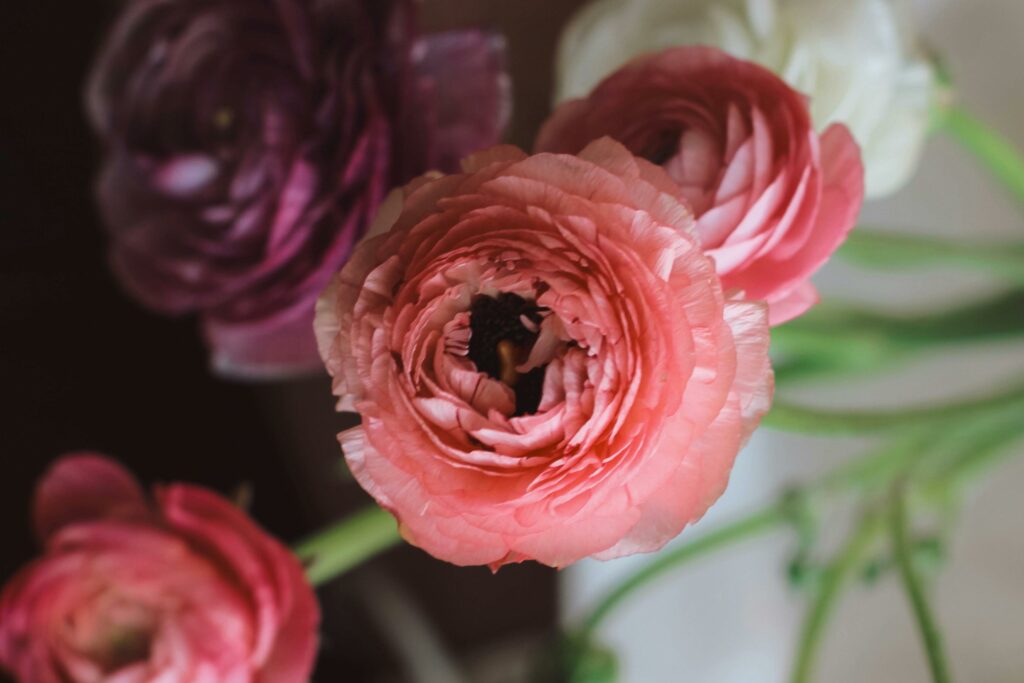你的購物車現在是空的!
A Guide to Flowers Native to Holland
•
The Netherlands, commonly known as Holland, has a rich botanical heritage shaped by its unique geography of low-lying wetlands, coastal dunes, and reclaimed polders. While the country is world-famous for cultivated tulips (which are actually native to Central Asia), it’s home to many beautiful indigenous wildflowers that have adapted to its distinctive environment.
Coastal and Dune Flowers
Sea Holly (Eryngium maritimum) This striking blue-silver plant thrives in the sandy coastal dunes along the North Sea. With its spiky, thistle-like appearance and metallic sheen, sea holly has thick, waxy leaves that help it conserve water in the harsh coastal environment. It blooms from July to September and plays a crucial role in stabilizing sand dunes.
Sea Thrift (Armeria maritima) Also called sea pink, this cushion-forming perennial creates dense mats of grass-like foliage topped with globe-shaped pink or white flowers. It flourishes in salty coastal conditions and blooms prolifically from April to October, creating stunning carpets of color along the Dutch coastline.
Yellow Horned Poppy (Glaucium flavum) With its vibrant yellow petals and distinctive long, curved seed pods, this poppy is unmistakable in coastal areas. The plant has silvery-grey foliage and can tolerate both salt spray and nutrient-poor sandy soils.
Wetland and Marsh Flowers
Yellow Flag Iris (Iris pseudacorus) This tall, elegant iris is perfectly adapted to the Netherlands’ abundant wetlands and waterways. Growing up to three feet tall, it produces bright yellow flowers from May to July. The plant was historically used in water purification and remains important for stabilizing riverbanks and canal edges.
Marsh Marigold (Caltha palustris) One of the earliest spring bloomers, this cheerful flower carpets wet meadows and ditches with glossy, golden-yellow flowers from March to May. Its heart-shaped leaves are equally attractive, and the plant thrives in the perpetually damp conditions common throughout Holland.
Purple Loosestrife (Lythrum salicaria) Standing tall along waterways and in marshes, this plant produces striking spikes of magenta-purple flowers from June to September. While beautiful, it’s an aggressive colonizer that can dominate wetland habitats.
Water Violet (Hottonia palustris) This aquatic plant produces delicate whorls of pale lilac flowers that rise above the water surface in May and June. Its feathery, submerged foliage provides important habitat for aquatic insects and fish.
Meadow and Grassland Flowers
Common Buttercup (Ranunculus acris) The quintessential meadow flower, buttercups create sheets of glossy yellow across Dutch grasslands from May to September. These cheerful flowers are deeply embedded in Dutch cultural heritage and childhood memories.
Ragged Robin (Lychnis flos-cuculi) With its distinctively fringed, pink petals that appear almost tattered, this flower adds delicate beauty to damp meadows from May to August. It’s become less common due to habitat loss but remains an important indicator of healthy, unimproved grasslands.
Lady’s Smock (Cardamine pratensis) Also called cuckoo flower, this plant produces clusters of pale pink to lilac flowers in spring. It’s one of the first nectar sources for butterflies and was traditionally associated with the arrival of spring.
Meadow Saxifrage (Saxifraga granulata) This charming plant produces clusters of white, five-petaled flowers on slender stems in May and June. It reproduces using tiny bulbils at its base and prefers the drier, sandy meadows found in certain regions of Holland.
Heath and Moorland Flowers
Common Heather (Calluna vulgaris) While most associated with Scotland, heather is native to Dutch heathlands, particularly in the eastern and southern provinces. The purple-pink flowers bloom from August to September, creating stunning purple landscapes. This plant requires acidic, nutrient-poor soils.
Cross-leaved Heath (Erica tetralix) This delicate heath species produces drooping clusters of pink, bell-shaped flowers from July to September. It prefers wetter conditions than common heather and is often found in boggy heathlands.
Woodland Flowers
Wood Anemone (Anemone nemorosa) One of the first spring flowers, wood anemones create carpets of white star-shaped blooms in deciduous woodlands from March to May. They spread slowly through underground rhizomes and are indicators of ancient woodland.
Primrose (Primula vulgaris) These cheerful yellow flowers emerge in early spring, brightening woodland edges and banks. They’re among the first food sources for awakening bees and butterflies.
Bluebell (Hyacinthoides non-scripta) While more common in Britain, native bluebells do occur in Dutch woodlands, creating misty blue carpets in April and May. They prefer older woodlands with dappled shade.
Conservation and Cultural Significance
Many of Holland’s native flowers have declined due to intensive agriculture, urbanization, and water management changes. However, conservation efforts are underway to restore traditional hay meadows, heathlands, and wetlands. Organizations throughout the Netherlands work to preserve these botanical treasures, recognizing their importance not just for biodiversity but for pollinators, cultural heritage, and the distinctive character of the Dutch landscape.
The Dutch have a deep cultural connection to their landscape and flowers, though the famous tulip cultivation industry tends to overshadow the country’s native botanical heritage. Understanding and appreciating these indigenous species helps maintain the ecological balance and preserves the natural beauty that has inspired Dutch painters and poets for centuries.

